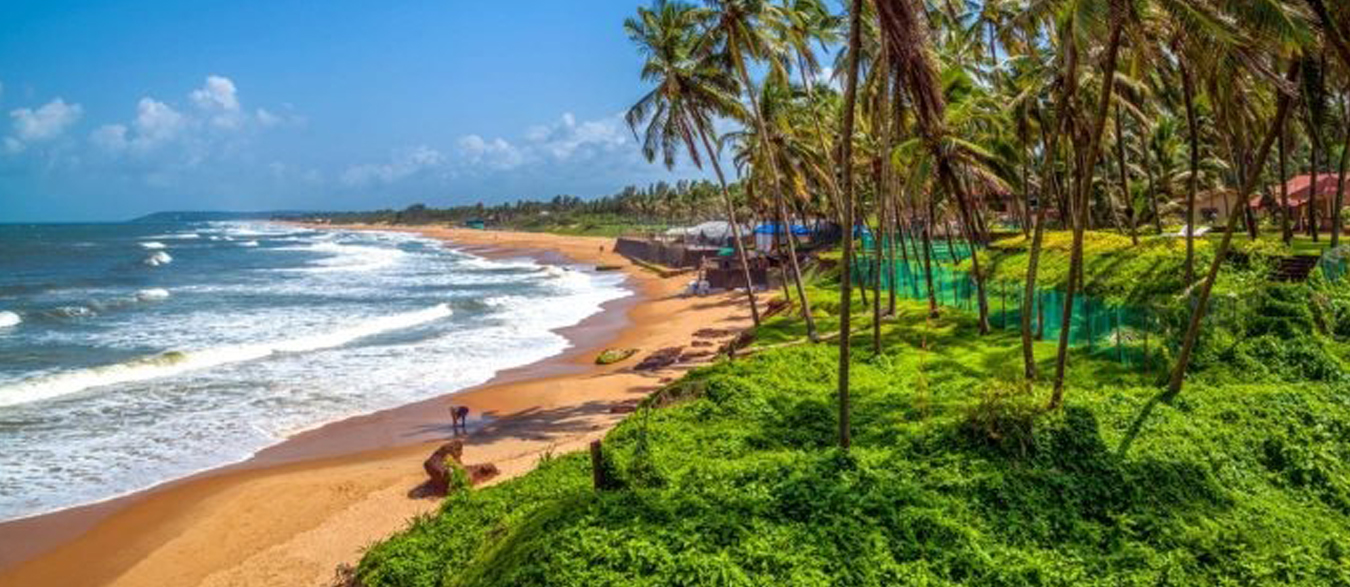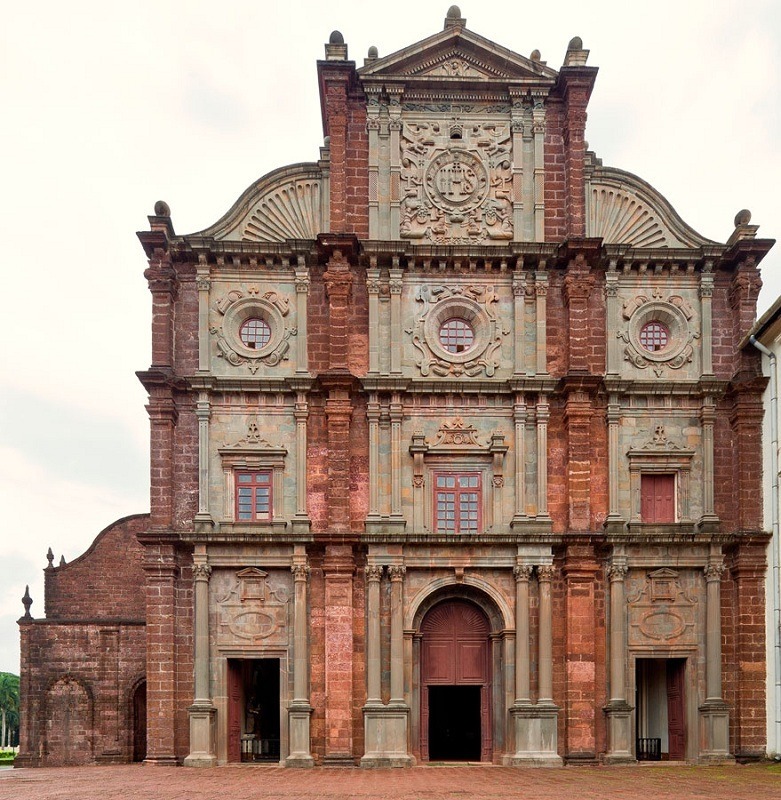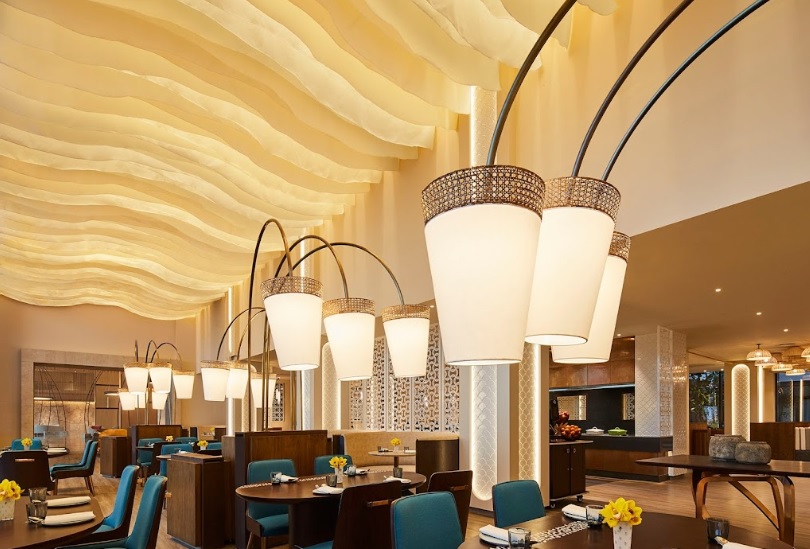When to Visit Goa
The best time to visit the beautiful beach town – Goa – is between the months of October to March, when monsoons crosses over to the rest of India after having drenched the land of Goa. This is the time when the seas are calm edged by soft golden sands and the sky is looking blue with moving white clouds. The low and pleasant temperature makes your stay more enjoyable and memorable.
Best Weather in Goa
Goa is located at the western coast that offers the region maritime weather Conditions. Lying in the tropical zone, Goa has a warm and humid weather, and consists of three seasons – summer, rainy or wet and winter. Goa normally experiences the temperature ranging from 35 degrees in summer to 18 degrees in winter. Winters arrives in Goa in October and stay here till February, offering amusing weather with minimum up to 15°C, making it the peak season for tourist activities and festivities
CONNECTIVITY : All Travels ways connecting GOA
By air :
Goa is well connected by airline services to most major cities in India. All flights, national and international, to and from Goa, operate from the Goa Airport at Dabolim near the port town of Vasco-da-Gama.
The airport is about 30 kms from the capital city of Panaji and is owned by the Indian Navy. Major airline operators such as Air India, Jet Airways, Spice Jet, Kingfisher Airlines, Go Air, Jet Lite & Indigo have flights carrying passengers and cargo in and out of Goa. Besides these, a number of chartered flights land in Goa from UK and other European countries. The national airline Air India also lands a few international flights, especially from the Gulf countries. Besides Air India, Air Arabia and Qatar Airways also operate international flights to Goa.
Most of the local airlines have a contact phone number in the city as well as at the airport where the latest information about flight status is always available. The list of phone numbers is available in the travel services section of the website.
It is advisable to book your tickets well in advance, especially during the high peak tourist season of October to January when most flights run full. It is also essential to re-confirm your flight timings at least 24 hours before departure.
Most major international airlines usually have agreements with one or more of their domestic counterparts in India, so if you are arriving from abroad it is possible to book your onward domestic flight at the same time as you pay for your international ticket.
The latest schedule of flights to and from Goa
By road :
Goa is connected with all the major towns in India via the National Highways NH4A, NH17 and NH17A. In most places along the way, the highway roads are in excellent condition and motorable at fairly good speeds. There are bus services operating from Goa to most towns and cities in neighbouring states, such as Mumbai, Pune, Belgaum, Hubli, Bangalore, Mangalore etc. at fairly regular intervals throughout the day.
These services are operated by the state owned Kadamba Transport Corporation (white and blue buses) as well as the respective transport corporations of the neighbouring states. Besides there are numerous private bus operators who provide all kinds of bus services from special to deluxe AC to sleeper coaches along these routes.
The bus services operate from the huge Kadamba bus stand at Panaji and from similar but much smaller bus stands in other Goan towns. Most buses tend to arrive in Goa in the early hours of the morning. The departures are in the early afternoon as well as early evening.
The buses usually stop along the way for dinner and breakfast at roadside restaurants. Ticket charges vary from Rs 250 to Rs 650, depending upon the distance, the season, the demand and the quality of bus service. A journey to Mumbai, takes around 12-16 hours.
The tickets can be obtained through recognised travel agents or the offices of the state transport corporations. The private buses usually depart from the Fort area and make stops at a number of places around Mumbai before leaving the city. Ensure that you have your seat and the bus registration number, and confirm the exact time and place of departure with the travel agent, as these frequently vary between companies.
The drive down from Mumbai, if you are coming by car, is along the beautiful highway which hugs the Konkan coastline, with excellent scenic beauty and typical small towns and villages along the entire route. There are a few winding and steep routes (called ‘ghats’) across the mountain ranges which add to the charm of the journey.
By rail :
Today, the high-speed Konkan Railway has a daily train which hardly takes around 8-9 hours for the same journey. Other trains between Mumbai and Panaji take typically around 10-12 hours.
The rail route also has trains which travel past Mumbai to other northern areas of India right upto Delhi as well as down south to Thiruvananthapuram in Kerala. The Konkan Railway has special reservation facility via the internet for foreigners which allows payment to be made by credit cards. There are also computerized reservation systems in most metros.
As the demand for the rail journey is quite high and most trains run filled to capacity, it is highly advisable to reserve the tickets well in advance of your actual journey to Goa. Goa has two major railway stations — Margao and Vasco-da-Gama, both located in the southern area of the state. The South Central Railway terminus is at Vasco-da-Gama and the Konkan Railway terminus is at Margao. Besides the two main stations, the trains usually halt for a few minutes at a number of other smaller stations in Goa.
The Konkan Railway has trains which ply between Mumbai and Goa and other destinations. The latest updated schedules for these are available on the official Konkan Railway website. The South Central Railway has one train, the Nizamuddin Goa Express coming in daily in the early morning. This train departs from Delhi and comes to Goa via Pune.
The Konkan Railway undoubtedly offers the quickest and cheapest route to Goa from Mumbai. In Mumbai there are two booking offices: one is on the upper floor of the Western Railways booking office in Churchgate Station and the second is at the Central Railway booking office, at the rear of ChatrapatiShivaji Terminus (Victoria Terminus or VT).
GETTING AROUND IN GOA
By Bus
Travelling around Goa is fairly easy. There is an extensive road network which connects most places in Goa with motorable roads. There are private as well as state transport corporation run bus services which service all the major locations.
Despite the overcrowding, noise and off-schedule service, there is a special charm in travelling in the private buses which are brightly painted and filled with colourful local characters. Do not be surprised if you see buses making unscheduled stops, especially in the rural areas, to pick up passengers waiting at all sorts of places besides the regular bus-stand.
By Car
If you are interested in exploring Goa on your own and at your own pace, then a car is a very good option. A number of companies offer rental cars, both self and chauffeur-driven. A list of companies offering car rentals is available in the travel services section of this website. Besides rented cars, there are the ubiquitous tourist taxis, which are available near most hotels and resorts and at all the tourist attractions. There are two types of taxis, the white-colored tourist taxis, and the yellow-topped black regular taxis.
The private tourist taxis, are completely white in colour, and are found at the Goa Airport, the railway stations and outside most popular hotels. Almost all major towns and tourist attractions have a taxi stand, where both types of taxis are available. Most hotels also arrange a taxi for you on request. These taxis quite often have an interstate license and can take you to nearby destinations outside Goa.
The taxi hire charges are fixed per kilometer, but with a little bit of bargaining you can arrive at a rate which is quite reasonable for the trip. The taxis can be hired per trip or for the whole day. Ensure that you fix a price for the entire journey before you sit in, so that you don’t get overcharged at the end of the trip.
By Motorcycle
Goa has a unique and very popular mode of transport known as a ‘pilot’. This is in reality a motorcycle taxi. This is the fastest and most economic way of getting about in Goan towns and sometimes to locations at short distances on the outskirts.
The motorcycle taxis are easily recognised by the yellow mudguards and yellow number plates. The driver who is known as the ‘pilot’ carries only one pillion rider at a time. They even have special taxi stand of their own. Bargain with the pilot for a good rate for the trip before you set out. Hired motorbikes, moped, scooters and bicycles are also a very economical mode of transport to travel around Goa, especially in the interiors. These are available in the cities as well as near most beach areas.
The cost of hiring a bike for a day ranges anywhere from Rs 200 to Rs 400. Usually, a down payment as security or deposit of your passport is required at most such places which rent out motorbikes.
By Autorickshaw
The three-wheeled auto-rickshaw taxi, painted yellow and black, is a common site in all Goan towns. This taxi is basically the front half of a motor scooter with a couple of seats mounted on the back. They usually take two to three passengers and are quite speedy on the crowded roads of Goan towns. Above all, they are very cheap as compared to taxis for travelling around the town. The rickshaws have separate stands in most places.
They have a meter system, according to which they are supposed to charge per km. However most don’t adhere to this, so in most cases bargaining is common before you set out on your trip.
By Ferry
At quite a few places around Goa, especially in the rural hinterland, you will have to cross a small river to get to your destination. Most such rivers now have a bridge across them, which has made the flow of traffic smooth all over Goa. However, where a bridge is yet to come up, you will be able to enjoy another mode of transport unique to Goa.
This is the ferry also known as ferryboat by the locals, which carries people and cars from one shore to the other, across the rivers and estuaries all around Goa. In some places, the ferry remains the only mode of transport to get to the mainland. Popular river crossings include: Old Goa to Divar Island, Divar to Narve, Querim to Tiracol, and Cavelossim to Assolna.
There is a ferry from the capital city of Panaji across the Mandovi river to Betim, despite the presence of two excellent bridges across the Mandovi river. Travellers to Goa feel that the ferry ride is one of the most romantic mode of transport in Goa. This most enjoyable ride is well worth checking out.
PANAJI or PANJIM
The tiny city of Panaji is the capital city of the tiny state of Goa. It really is a truly charming city with a small river flowing around one side of the city.The city is also known as Panjim. Panaji with a population of 40,017 (2011 census), is the biggest city in north Goa, and the third biggest city in the state after Vasco da Gama and Margao. It is on the southern banks of the Mandovi River. However, the greater Panaji metropolitan area also has a beachfront location with the Arabian Sea. It is the peninsula of the Mandovi where you will see floating casinos and cruise boats. Panjim is 27.8 kilometers from the Goa International Airport at Dabolim.
In Panaji, you will find the Miramar and some other beaches, but the city is more about heritage buildings, churches, temples, architecture, walking tours, and fun activities like casino gaming and river cruising. There are many English cafes and French restaurants tucked away in small corners. You can see historic churches and Fontainhas, the old city, a UNESCO World Heritage site.
STAYING IN GOA
Accommodation in Goa is plentiful with a variety of hotels, resorts and guest houses to suit every budget and every taste. There are simple and bare rooms available for the thriftiest of back-packers and five-star deluxe luxury suites for those that want to indulge their fancies. Almost all round the year, travellers are usually assured of finding a room – if not in a hotel, then at least in a private house. However, come the peak season of December and January, you are likely to experience problems, unless you book your rooms well in advance.
Just around Christmas until the dawn of the new year, Goa is in festive mood and plays host to hundreds and thousands of visitors from all over India and around the world. So accommodation is at a premium everywhere.
HOTELS IN PANJIM
Panaji or Panjim is the state capital of Goa, so there are always many people visiting the city. There are tourists, and there are also those who come for administrative work and on business. You will find many hotels in Panaji in all budgets – there are 5-star properties, boutique hotels, budget properties, and B&Bs.



